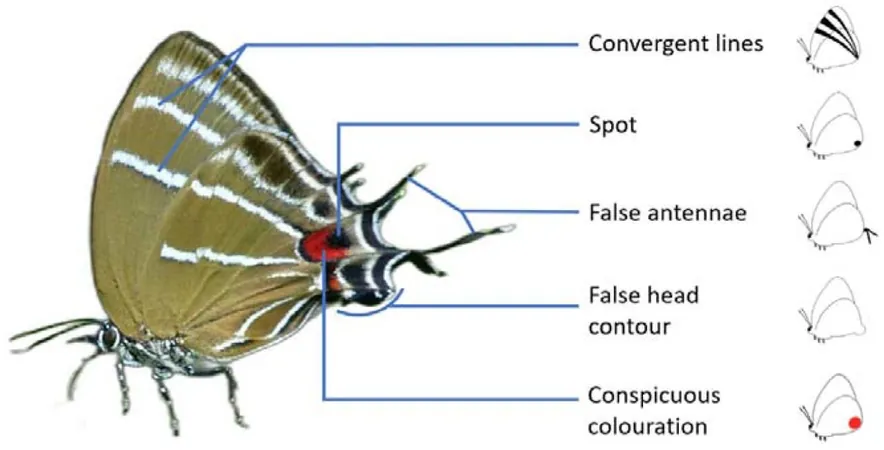
How Butterflies Outsmart Predators with 'False Heads'
2025-07-09
Author: Nur
The Ingenious Evolution of Butterfly Defenses
In the wild, survival often hinges on clever adaptations. Among the most fascinating are the 'false heads' found on certain butterfly species, which serve as a cunning defense mechanism against predators. These remarkable adaptations enable butterflies to divert attacks from their vital heads to the less critical hindwings, enhancing their chances of survival.
Unlocking the Mystery: How Did These Traits Evolve?
Despite the widespread occurrence of these false heads, understanding their evolutionary origin has remained elusive... until now! A groundbreaking study by researchers at the Indian Institutes of Science Education and Research (IISER) sheds light on how these traits may have developed in a coordinated manner to form an effective predator deterrent.
Insights from Thousands of Butterfly Images
The study meticulously analyzed nearly 1,000 images of lycaenid butterflies, focusing on five distinctive traits that contribute to the illusion of a false head. These traits include false antennae on their hindwings, eye-like dark spots, vibrant coloration, contour mimicking a head, and convergent lines enhancing the false head’s appearance.
A Complex Network of Traits
Through detailed analysis, researchers uncovered a fascinating connection: four out of five traits evolved together, forming a complex pattern that increasingly resembles a true head over time. Interestingly, convergent lines were linked to false head contours but were less connected to the other traits. This finding reinforces the concept that these features collectively function as an adaptive strategy to mislead predators.
Size Isn't Everything in the Butterfly World
Initially, scientists speculated that larger butterflies might have a heightened need for deceptive head structures, given their visibility to predators. However, the study concluded that the size of a butterfly didn’t correlate with the presence of false heads, suggesting that various prey sizes can equally benefit from these clever adaptations.
Adaptations in Response to Predator Pressures
Intriguingly, the study also noted that the presence of false head traits could be transient. Researchers found evidence of these adaptations being lost and later regained, likely reflecting shifts in predator populations and pressures over time. This dynamic evolution underscores nature's adaptability in the face of predation.
A Window into Evolutionary Creativity
Despite challenges like image quality and species diversity, this captivating research offers fresh perspectives on the evolution of butterfly defenses. It highlights the remarkable intricate dance of adaptation and survival that continues to unfold in the natural world.



 Brasil (PT)
Brasil (PT)
 Canada (EN)
Canada (EN)
 Chile (ES)
Chile (ES)
 Česko (CS)
Česko (CS)
 대한민국 (KO)
대한민국 (KO)
 España (ES)
España (ES)
 France (FR)
France (FR)
 Hong Kong (EN)
Hong Kong (EN)
 Italia (IT)
Italia (IT)
 日本 (JA)
日本 (JA)
 Magyarország (HU)
Magyarország (HU)
 Norge (NO)
Norge (NO)
 Polska (PL)
Polska (PL)
 Schweiz (DE)
Schweiz (DE)
 Singapore (EN)
Singapore (EN)
 Sverige (SV)
Sverige (SV)
 Suomi (FI)
Suomi (FI)
 Türkiye (TR)
Türkiye (TR)
 الإمارات العربية المتحدة (AR)
الإمارات العربية المتحدة (AR)